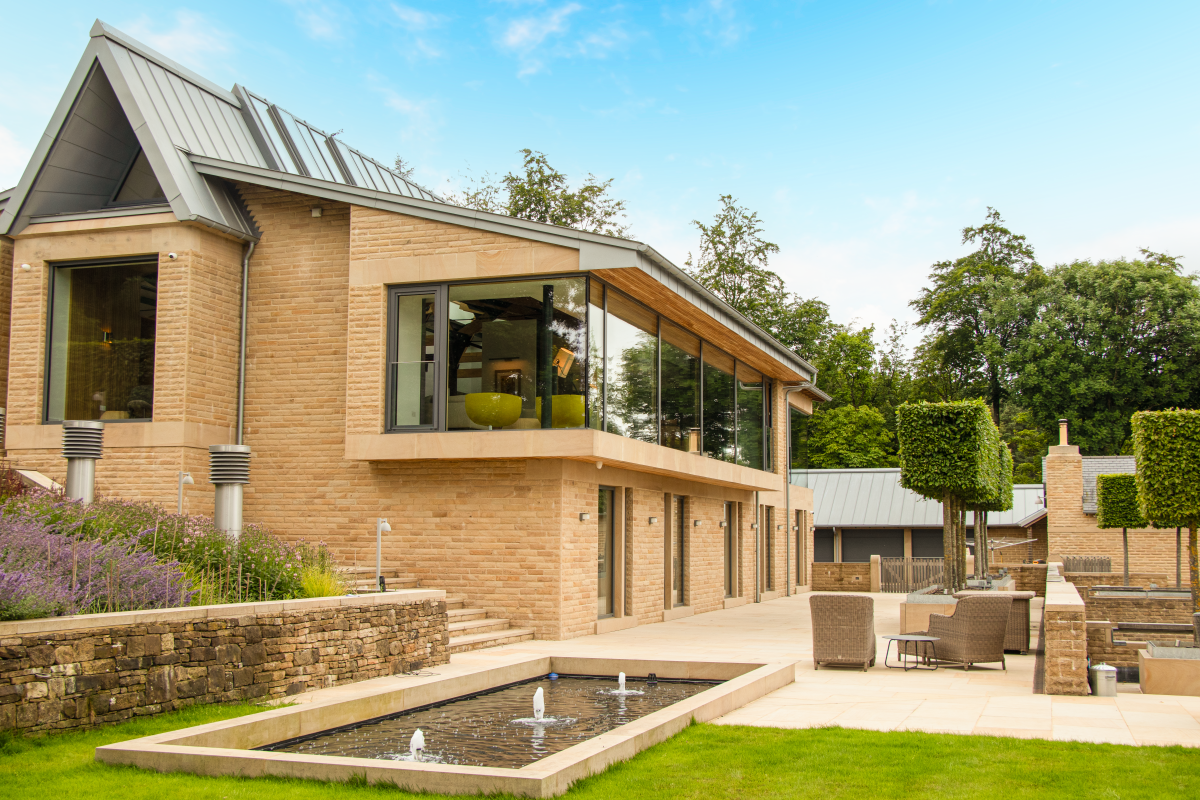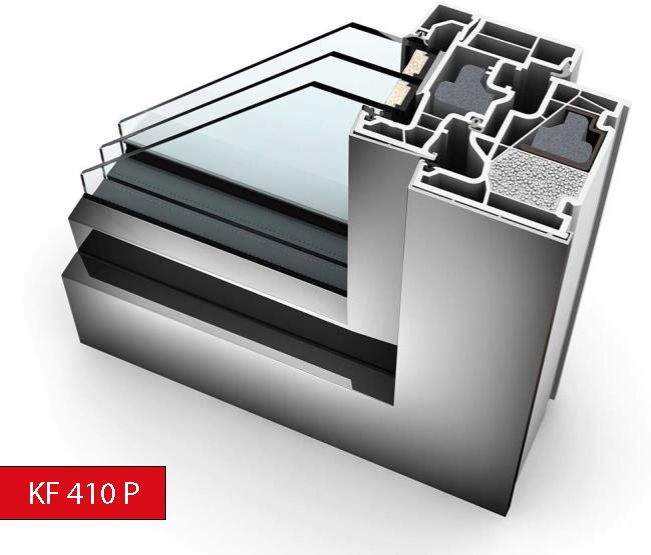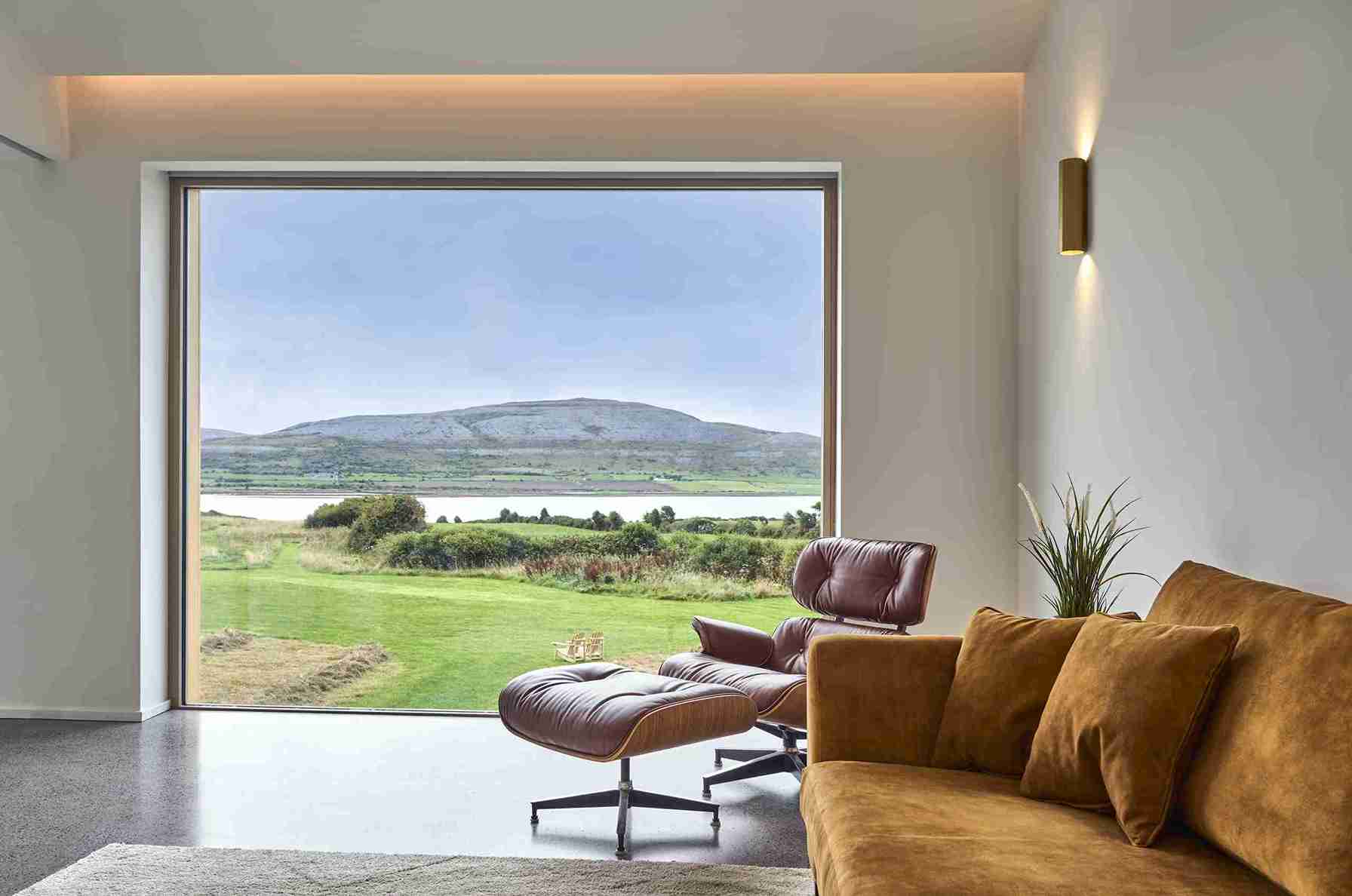Windows are an essential part of the insulation layer of the building envelope. For that reason, investing in quality windows is important to minimise heat loss from windows and doors, as well as assuring optimal indoor conditions. Inadequately insulated and poorly installed windows will cause cold surfaces on the facade, and increase the risk of mould growth as a result of thermal bridging. Consequently, active heating below the windows is required to compensate for cold draughts, temperature stratification and radiation. On the other hand, highly insulated, Passivhaus windows will have a significant positive contribution, raising the level of thermal comfort within a building.

More than Double your Energy Saving
Windows suitable for Passivhaus and EnerPHit projects reduce heat loss by more than 50% compared with double glazed windows, commonly used in UK homes. Read these insightful Passivhaus selfbuild and certified EnerPHit case studies to find out what difference Internorm Passivhaus windows made to the home owners.
So these windows are not just standard products which have been slightly modified, but a totally new generation of windows that have been re-designed to provide significant improvements in performance. That improved quality level has the following advantages:
- Positive Energy Balance even in the coldest winter climate
- Pleasant indoor climate.
In order to achieve the advantages above, Passivhaus windows must demonstrate the following characteristics:
- Triple, low-E glazing unit
- Insulated glass edge bond (‘warm edge’)
- Highly insulated frame
- Optimised installation detail in order to minimise the thermal bridge effect at the edge between the frame and the wall.
All these contributing factors are essential to create a window or door, which has around 50% higher thermal insulation performance. This is necessary to provide a pleasant living environment. Even during cold winter nights, high performance triple glazed windows ensure that internal window surface temperatures will remain around 17°C, making them ideal for window seats.
Professional installation of windows and doors is crucial to ensure good airtightness is achieved and to avoid droughts.
Maximise Solar Gain in Winter
Windows are the building component which allow for the direct and indirect solar gains. Passivhaus windows provide positive energy balance even in cold climates, as long as they have a favourable orientation (south-east, south-west) and shading is reduced to a minimum during winter months. This is something that Passivhaus designers and architects focus on when designing Passivhaus buildings.
Passivhaus windows for the temperate cool climate should have a Uw value of 0.8 W/(m²K) uninstalled. This ensures optimal level of thermal comfort close to the windows and eliminates cold radiation and droughts.
Let’s see in more details the two most important quality factors of the windows during winter:
- Uw value – Heat Transfer Coefficient
- g-value – Total Solar Energy Transmittance (Solar Heat Gain Coefficient)
What is the Uw Value?
To put it simply, the Uw value quanitifies the heat loss from the surface area (1 m²) of a window, when the temperature difference between the interior and exterior is 1°C.
Architects and Passive House Designers model, using the PHPP (Passive House Planning Package), the performance of windows. The applied formular to calculate the Uw value, which complies to the European EN10077 standard, is the following:
- The U value of the glazing (Ug) and the dimensions of the glazed area (Ag)
- The U value of the window frame (Uf) and the projected area of the frame (Af)
- The linear transmittance at the edge of the glazed area (Ψg) and the length of the glass edge, Lg.
- The thermal bridge heat loss due to the installation of the window in the wall (Ψinst) and the length of the installation edge Linst
The Uw value for the installed window (Uw,inst) is calculated using the following formula:
Uw, inst = [Ag*Ug + Af * Uf + Lg * Ψg + Linst * Ψinst] / (Ag + Af)

G-Value: Total Solar Energy Transmittance
The Solar Heat Gain Coefficient (g-value) indicates the fraction of solar radiation which is admitted through the glazing. In order for Passivhaus windows to provide a positive energy balance, the following requirement has to be fulfilled:
Ug-S*g <0: This simple formula explains the energy balance within windows and provides a quick indication about what window design works better for your building: Heat loss of the glazing unit (Ug), minus the solar energy that enters your building (S*g). The result should be negative to ensure a positive energy balance.
For Central Europe climate the ‘S’ (annual solar transfer coefficient) is considered to be 1.6 W/(m²K). Windows, which meet this requirement, will allow for solar gains to compensate for the heat loss.
Poorly performing windows are perceived as weak areas within a building envelope, where great amount of energy is lost. On the other hand, high-performance Passivhaus windows allow for net energy gains, provided that they are not overly shaded and their orientation is favourable.
What figures are recommended when choosing Passivhaus windows?
For temperate cool climate, which applies to the UK and Ireland, following values are recommended:
- Ug – below 0.7 W/(m²K): when windows need to comply with PAS24 or Secured by Design, where laminated glass is required, the Ug value would be around 0.7 W/(m²K). When float or toughened glass can be used, the Ug value of typical triple-glazed units would be around 0.5 W/(m²K).
- Uf – below 0.9 W/(m²K): high-performance composite window systems could get achieve up to 0.85 W/(m²K)
- g – between 0.5 – 0.6
It is typical for architects and Passivhaus Designers to consider Passivhaus windows as the radiators of the windows. The aim of the information provided, is to shine a light on the key design parameters of the windows that have a huge impact on thermal efficiency, energy balance and thermal comfort.
Internorm timber-aluminium and uPVC-aluminium windows, lift & slide doors, as well as entrance doors, offer outstanding thermal performance. To discuss your window and door requirements for your energy efficient building, Passivhaus or EnerPHit project, please email Internorm UK: office@internorm.co.uk.
